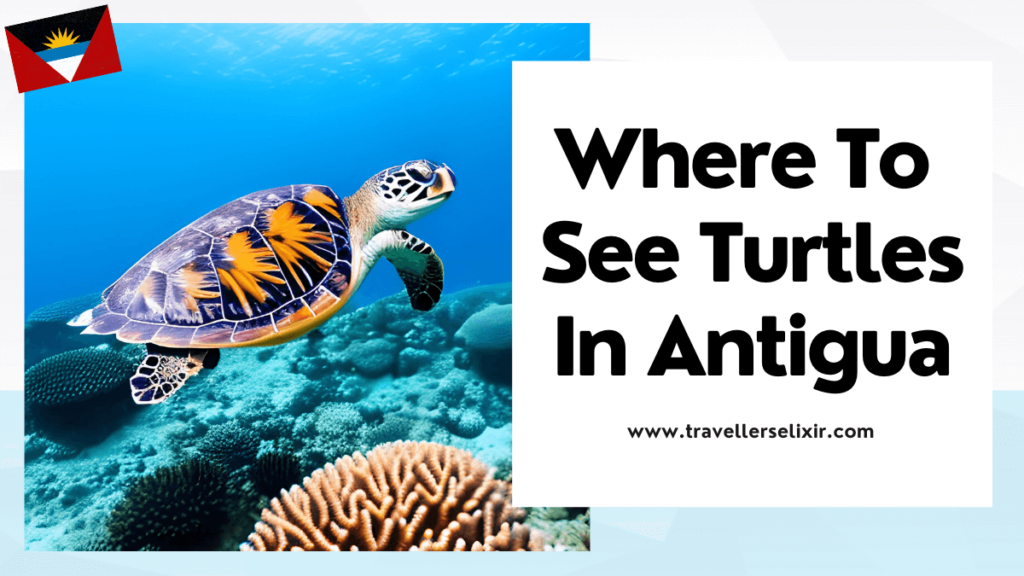Welcome to the enchanting island of Antigua where the turquoise waters are home to some of the most fascinating creatures on earth – sea turtles!
I’ve been to Antigua twice now and each time I’ve been lucky enough to come face to face with turtles out in their natural habitat.
Based on my own experience, the best place to see turtles in Antigua is in Freeman’s Bay which has a large population of sea turtles.
I’d recommend booking this sea scooter snorkeling tour at Freeman’s Bay which gives you the chance to swim with turtles and explore sunken shipwrecks.
In the rest of this article, I’ll also be revealing the exact locations in Antigua where you can swim with turtles and where you can see baby sea turtles hatching.
Best Places To See Turtles in Antigua
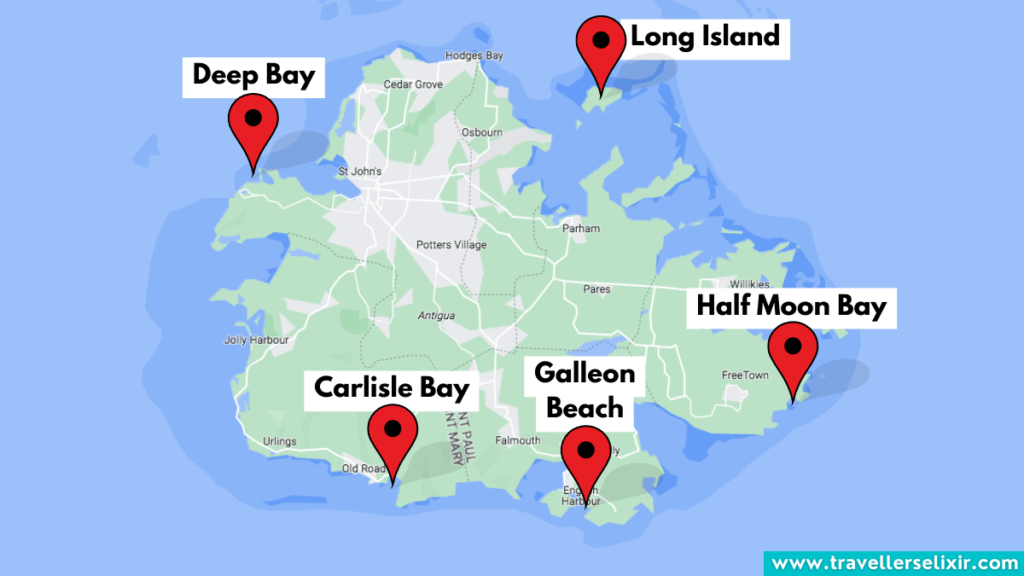
Antigua is a tropical island paradise that comes complete with sandy beaches and turquoise waters. It boasts 365 different beaches – that’s one for every day of the year.
Antigua is actually one of the most popular places in the Caribbean to see sea turtles especially as it is home to 4 different sea turtle species (Hawksbill, Green, Leatherback and Loggerhead).
Below I reveal the exact spots and locations where you can see the turtles for yourself…
1. Galleon Beach
From firsthand experience, the best place to swim with turtles in Antigua is at Galleon Beach which looks out into Freeman’s Bay.
Galleon Beach sits on the southern tip of the island and from here you can easily jump into Freeman’s Bay for snorkeling. This bay features shallow shipwrecks and coral reefs.
The beach itself features a beautiful quarter mile stretch of golden sand and calm clear waters. The bay also features a healthy snorkeling reef filled with marine life.
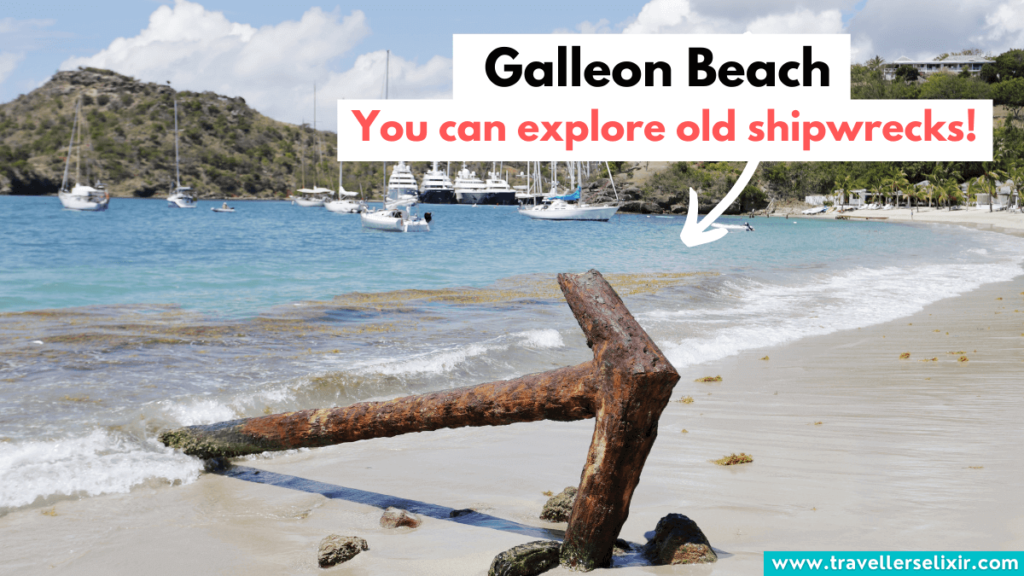
One of the most fun ways to see the turtles is to join a sea scooter snorkeling tour which is what I did on my most recent trip to Antigua.
The bay is a large area and it can be difficult to navigate on your own so going with a guide ensures you get to see a turtle.
The sea scooters help propel you through the water so you’ll feel like you’re one of the turtles!
When I did it recently, I got to see at least 7 or 8 turtles who were just going about their day, munching on seagrass.
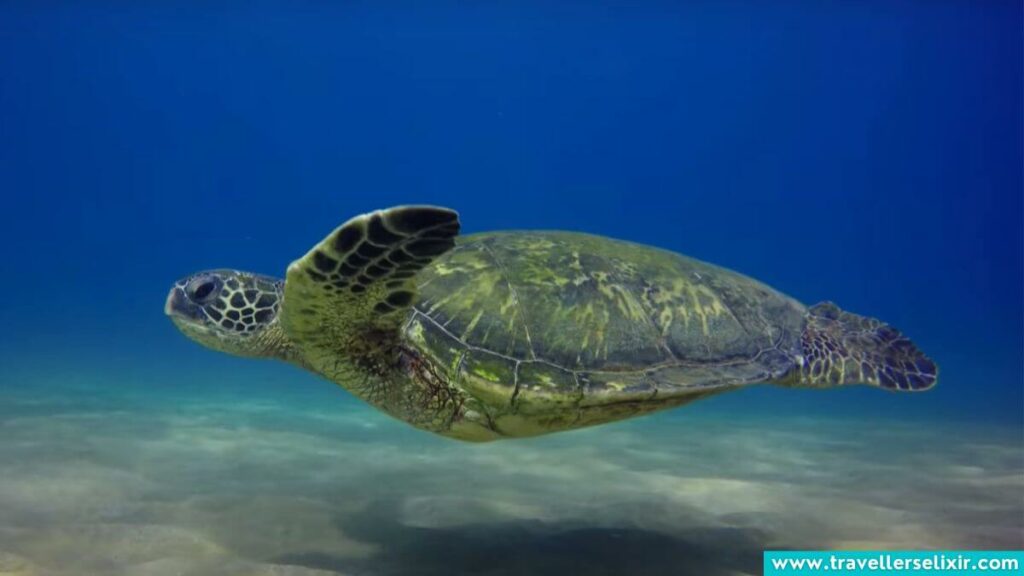
I also got the chance to not only swim alongside the turtles but also explore shipwrecks. As well as turtles, I saw stingrays, crabs, barracudas and tons of tropical fish.
💡 Pro Tip: Make sure you book in advance if you want to do the snorkeling tour as this one often sells out (it’s super popular).
Check out the video below to see the kind of sights you can expect on a snorkeling tour at Galleon Beach:
2. Long Island
Long Island is a small offshore island that is also known as Jumby Bay Island.
The easiest way to reach this island is by joining a day trip boat tour where you’ll be taken to the island by your experienced guide. This is what I did and I really enjoyed the experience.
This tour includes a snorkeling session and you’ll get the chance to learn all about the turtle project on Long Island.
Long Island is a private uninhabited island with stunning white sandy beaches, turquoise waters and a pristine ecosystem.
Few people ever get the chance to visit this largely untouched island so make sure you do whilst you’re in Antigua.
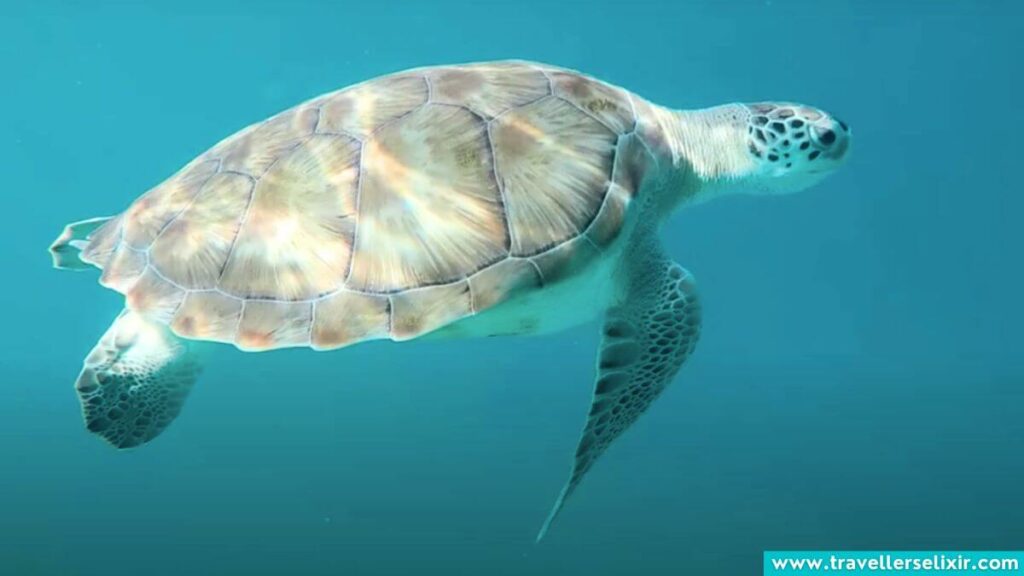
I spotted several turtles here within minutes of hitting the water. I also found that, as the water was super clear, it was really easy to see them even from a distance.
3. Carlisle Bay
Carlisle Bay, which sits on Antigua’s southern coast, is a private luxury resort with crystal clear waters and soft sandy beaches.
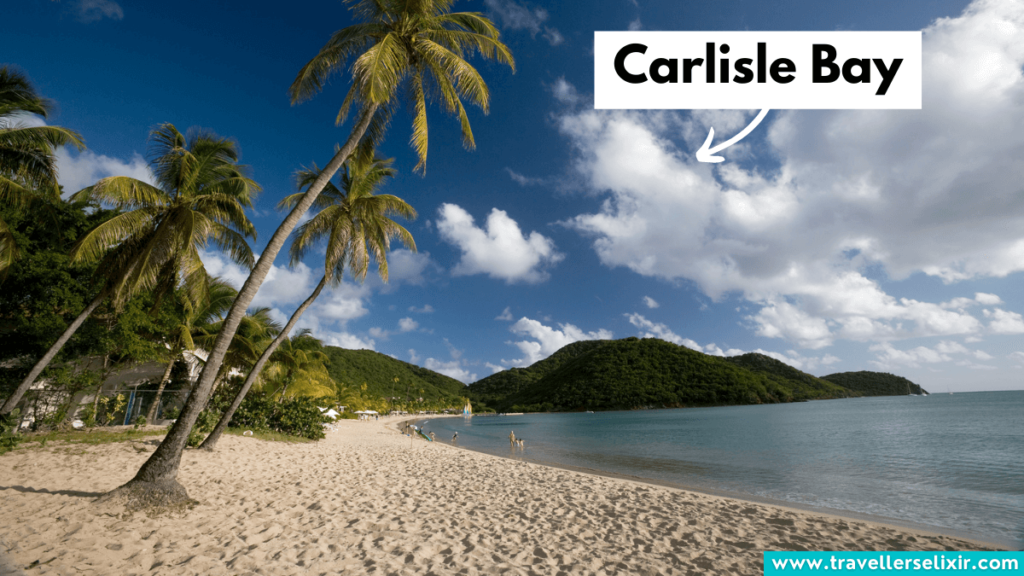
The beach is private and exclusive to Carlisle Bay guests so you’ll have to stay at the resort to see the turtles.
I’m not gonna lie, I literally booked one night here just so I could go snorkeling and meet the turtles (I’m a turtle enthusiast ok!!).
One thing that makes Carlisle Bay stand out is that it doesn’t allow any motorized water sports.
This means that there’s nothing to disturb the turtles and so sightings are super common as more turtles inhabit the area.
You can jump right into the water and snorkel amongst the turtles or head over to nearby Cades Reef for even more fun. I personally found that Cades Reef was the best.
Luckily, the resort includes a complimentary snorkeling excursion to Cades Reef (which is teeming with turtles) with every stay.
Check out the video below which shows the vibrant array of marine life you’ll find at Cades Reef:
4. Half Moon Bay
Half Moon Bay is a quiet, crescent-shaped beach which features 3,200ft of white sand and a nearby national park.
As well as sea turtles, I saw pufferfish, barracudas, tang fish and more. You may even spot the occasional dolphin.
(I may or may not have seen a dolphin here. I did saw something that looked like a dolphin but it was really far away in the distance so who knows!)
I found that this beach had a very unspoiled and authentic feel as it is largely undeveloped and it genuinely looked like something out of a travel brochure.
5. Deep Bay
This lesser-known spot is the perfect place to escape the tourists. Few people know about it so it feels like a private bay just for you.
When I visited, there was literally only 3 other people there!!
One of the biggest draws to this spot is the magnificent sunken ship which you can explore. The Andes, a three-masted steel merchant ship, caught fire and sank in the bay back in 1905.
I really enjoyed exploring the shipwreck and it appears that the turtles love it too as it was absolutely teeming with marine life including sea turtles, stingrays and various fish species.
For this reason, Deep Bay is a super popular spot for both snorkelers and divers.
Where To See Baby Sea Turtles In Antigua
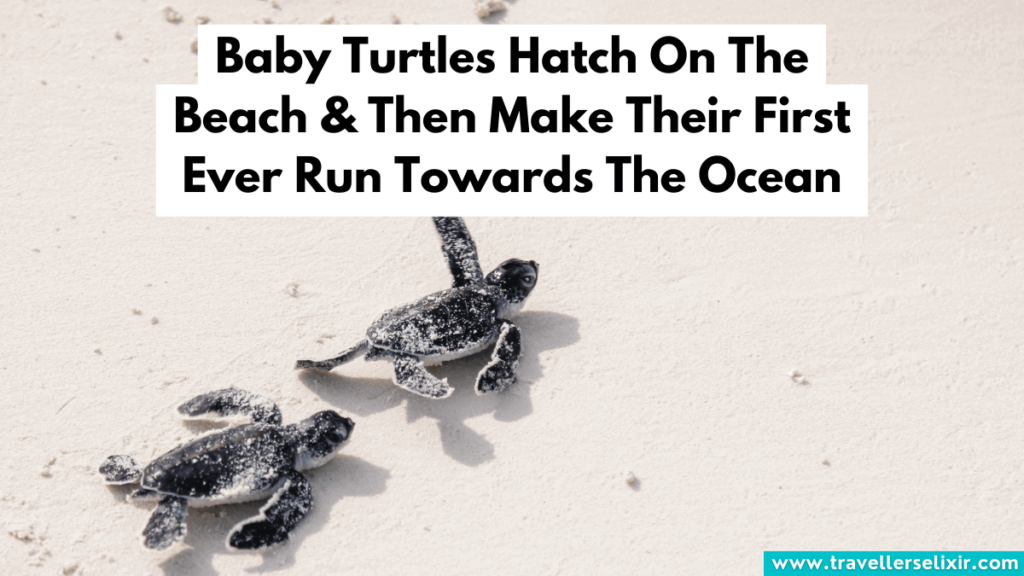
One of the main reasons people come to Antigua to see turtles is to see the baby turtles hatching from their eggs and making their first ever run towards the ocean.
Seeing this phenomenon for yourself is a magical experience and it’s something you’ll never forget.
Imagine the tiny turtles poking their way out of their eggs and imagine being part of it yourself.
The babies face more challenges than ever including:
- Eggs are often crushed by beach activities.
- Birds take the eggs whilst looking for a meal.
- Development on the beaches damage breeding grounds.
- Ocean pollution.
Some of these baby turtles struggle to make it to the ocean because of this and need extra help from volunteers.
Luckily for you, there are several baby turtle release programs offered by hotels in Antigua where you will be taken to the exact beaches where the turtles lay their eggs.
You can help the baby turtles’ chances of survival by taking care of their nest, protecting them until birth and then helping them reach the ocean after hatching.
Hotels which offer turtle release programs in Antigua:
Check out the video below which shows some baby turtles spotted on the beach at St. James Club Resort:
Another location where baby turtles can sometimes be spotted hatching is on Galley Bay Beach which lies on the island’s northwest coast.
For the best chance of spotting baby turtles on this beach, go after dark as this is when they usually hatch (be careful not to disturb them).
Best Time of Year to See Turtles
There is a resident population of turtles that live in the waters surrounding Antigua all year round however more turtles arrive between June and October to lay their eggs.
If you’re just wanting to swim with turtles in the ocean then you can do this at any time of year.
One interesting thing about turtles is that they always return to the exact same beach at the same time every single year to lay their eggs.
Whilst you can see turtles all year long in Antigua whilst snorkeling or diving, the summer months is the best time as the turtles come ashore to lay their eggs on Antigua’s beautiful beaches.
Baby sea turtles tend to hatch around 45 days after their egg has been laid and then they make their way into the ocean to begin their life.
This means that from June to October you will actually be able to see the turtles nesting.
The baby turtles start hatching from July until November so if you’re lucky you might even spot a baby sea turtle hatching from an egg!
Tips For Swimming With Turtles
First time swimming with turtles?
To ensure the turtles remain safe, there’s a few key things to bear in mind when swimming with them in Antigua.
Remember that all of the different turtle species are endangered so it’s important that we do all we can to help their chances.
- Don’t be too loud. Try to be as quiet as possible when swimming up to a turtle as loud noises will scare them away.
- Do not touch the turtle. Turtles are wild animals and should be respected.
- Do not get too close. This might scare the turtle and they could bite you if they get really scared (don’t worry this is super rare!).
- Do not feed the turtles. They don’t need help finding food.
- Always approach a turtle from the side. This gives them a clear view of you and a clear path ahead of them if they want to swim onwards.
- Don’t disrupt the turtle’s natural behavior. You can enjoy the turtles by watching them do their thing but try not to disturb them.
These key tips protect both you and the turtles.
Did you know you can also see turtles in Bermuda?
And that’s it!
Thanks for reading this post on where to see turtles in Antigua.
Wherever you are in Antigua, there’s plenty of options here to see turtles in their natural habitat.
Whether you’re wanting to snorkel alongside the turtles in the water or help the baby turtles make their first journey to the ocean, these are all unforgettable experiences that will make your trip even more special.
If you liked this post, you may also like these:

